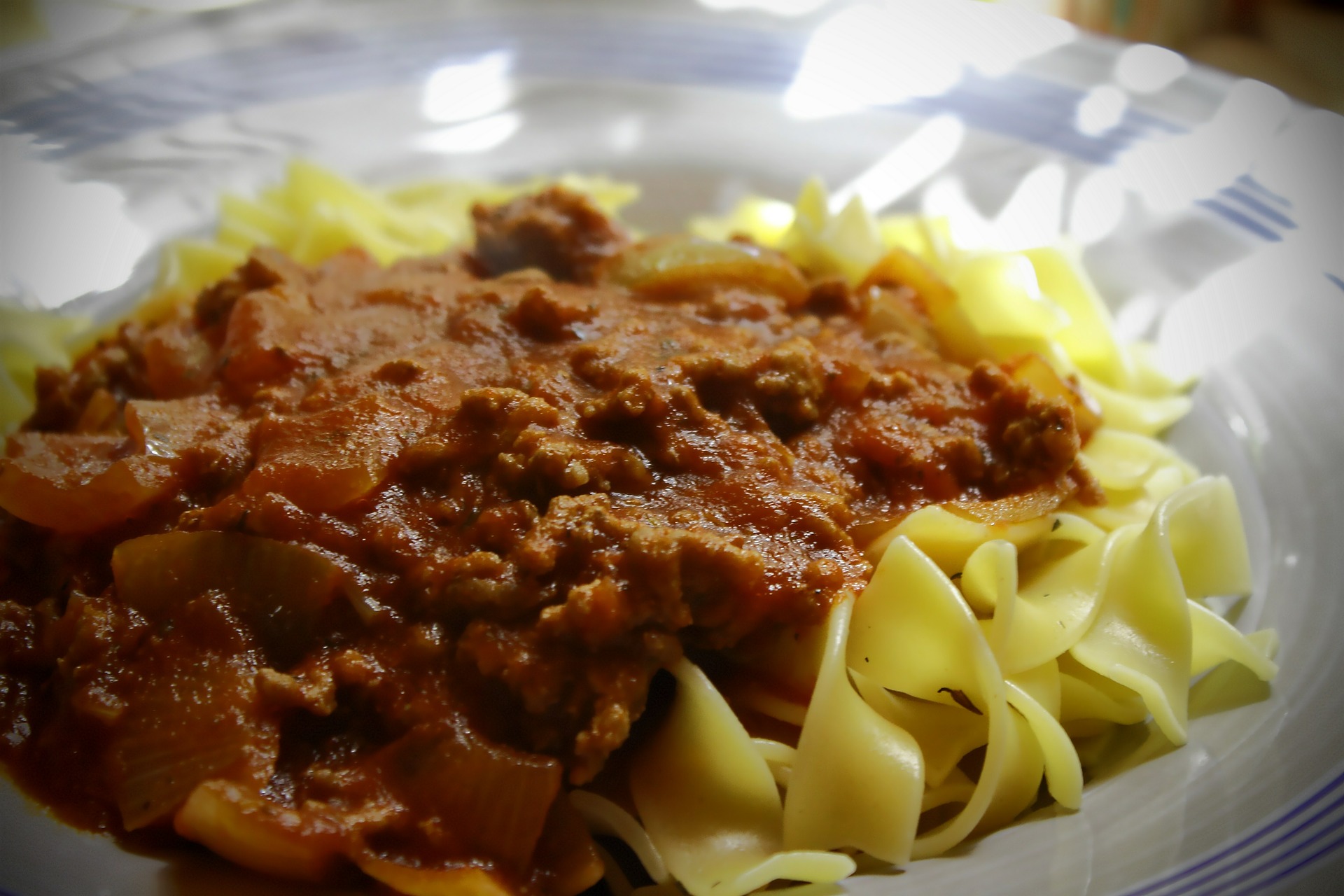These days, Bolognese sauce basically translates to any meat pasta sauce, but it used to have a more specific definition.
Also called spaghetti Bolognese, Ragu alla Bolognese, tagliatelle al ragu, etc., Bolognese sauce is a super slow cooked meat sauce for spaghetti or larger types of pasta.
Unlike other pasta sauces, Bolognese traditionally has very little tomato. The tomato or tomato paste is pretty much only there as a binding agent, not for flavoring. Also interesting: no garlic or herbs are added.
Most people maintain that Bolognese sauce comes from Bologna, Italy, where other famous foods originated (like bologna). However, Lonely Planet believes the town of Imola, just west of Bologna, is the origin.
Initially, Bolognese sauce was made with inexpensive, grown-at-home vegetables – carrots, celery, and onion – and locally raised meat, preferably pancetta and minced beef.
This is probably the first time I have seen a recipe, or description of one, that lists “locally grown meat” as an ingredient. Nowadays, everyone seems to buy local everything if possible, but again, never saw an individual ingredient to be listed as such.
As Delallo.com puts it, “Traditionalists cling to their great-grandmother’s recipe; regionalists only cook with products local to their area.”
So then, historically, traditional, classic Italian Bolognese sauce (although they don’t call it such) has:
- Minced carrot, celery, and onion
- Pancetta and minced beef
- Red wine
- A tiny bit of tomatoes or tomato paste
- A tiny bit of cream or milk
- Maybe a tiny bit of butter and salt
Then, it’s simmered for hours and hours and hours and hours, and served on tagliatelle pasta.
Today’s faster, cheaper, Americanized version has:
- Minced carrot, celery, and onion, and/or other vegetables
- At least two different kinds of meat, which could be beef, pork, veal, etc.
- Red or dry white wine
- (More) tomatoes and/or tomato paste
- (More) cream or milk
- A pinch of nutmeg or cinnamon
Then, it’s simmered for awhile but not forever (my recipe does 45 minutes), and served on your choice of pasta, although thicker is recommended because it handles the heavier sauce better.

Comments
One response to “Food history: Bolognese sauce”
A further comment on this post: I’m currently reading Heat by Bill Buford, where he seems to indicate that tomato-less Bolognese sauce derives from the time when people believed tomatoes (and other members of the Nightshade family) to be poisonous. More modern Bolognese sauces in fact do contain small amounts of tomato.